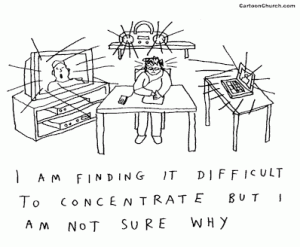 Samadhi is a Sanskrit word which is the state of consciousness induced by complete meditation, derived from the verbal roots “samā” (the state of total equilibrium) and “dhi” (of a detached intellect).
Samadhi is a Sanskrit word which is the state of consciousness induced by complete meditation, derived from the verbal roots “samā” (the state of total equilibrium) and “dhi” (of a detached intellect).
Samadhi is the eighth and final of Patanjali’s “Eight Limbs” of Raja Yoga (or classical yoga). Patanjali’s commentary on Samadhi (Yoga-Sutras 1.41): “Just as the naturally pure crystal assumes shapes and colors of objects placed near it, so the Yogi’s mind, with its totally weakened modifications, becomes clear and balanced and attains the state devoid of differentiation between knower, knowable and knowledge. This culmination of meditation is Samadhi.”
Samādhi is the primary focus of part one (Samādhi-pada) of the Yoga Sūtras. Patanjali intended for the last three steps in his eightfold path (Dharana, Dhyana and Samadhi) to be studied and practiced together because there is no clear dividing line between any of these three stages. Collectively they are called “Samyama” (Control). When practiced progressively, concentration (Dharana) merges into meditation (Dhyana) and then into non-dual union with the Divine (Samadhi).
A general definition of Samadhi is a super conscious state in which an individual experiences his identity with the ultimate Divine Reality (Brahman). However, there are a number of technical variations (stages or states) of Samadhi depending upon whether it is in Vedanta philosophy or in Yoga philosophy. Some of the most commonly recognized variations are…
- Savikalpa Samadhi: In Vedanta philosophy this is the first stage of transcendental consciousness and is where the distinction between subject and object persists. The spiritual aspirant in this state may have mystic visions, either with or without form.
- Nirvikalpa Samadhi: Literally means, “changeless Samadhi,” and in Vedanta philosophy refers to the transcendental state of consciousness where the spiritual aspirant becomes completely absorbed in union with the Divine, so that all sense of duality is erased.
- Savichara Samadhi: According to Yoga philosophy this Samadhi refers to the state in which the mind achieves identity with an object of concentration (either internal or external), this object will have a name, a quality, and can be known as such.
- Nirvichara Samadhi: This is a term in Yoga philosophy referring to the state in which the mind achieves identity with a subtle object of concentration; something beyond name, quality, and knowledge, where knowledge, knower and the known become one.
- Nirbija Samadhi: Translated literally as, “Seedless Samadhi.” In Yoga philosophy this is the non-dual state of consciousness which is unconditional because all projected conditions have been transcended. Nirbija-Samadhi has no conditioning cause since all causes have all been transcended, and all conditional activity has been surrendered. The mind is now a radiant formlessness empty of both specific and generalized impressions, including the seer and the seen.
In conclusion: The mind is a bundle of mental “patterns” of awareness. When all these patterns of awareness have been rejected and annihilated, what remains is an ultimate form of consciousness – Samadhi.

Mental “patterns” of awareness
Related article, click on: The Eight Limbs of Yoga (Part 7 – Dhyana)
Check back soon for an elaboration on each of the five “Yamas”.
 Dhyana is a Sanskrit word which means to meditate, derived from the verbal root dhyai, Dhyana it is the most common designation for both the meditative state of consciousness and the yogic techniques by which it is attained.
Dhyana is a Sanskrit word which means to meditate, derived from the verbal root dhyai, Dhyana it is the most common designation for both the meditative state of consciousness and the yogic techniques by which it is attained. Dharana is a Sanskrit word which means immovable concentration of the mind (or that which gives stability”) from the root Dhar, which means to “bind together”, “to make stable”. Dharanais the willful act of concentration of the mind.
Dharana is a Sanskrit word which means immovable concentration of the mind (or that which gives stability”) from the root Dhar, which means to “bind together”, “to make stable”. Dharanais the willful act of concentration of the mind.
